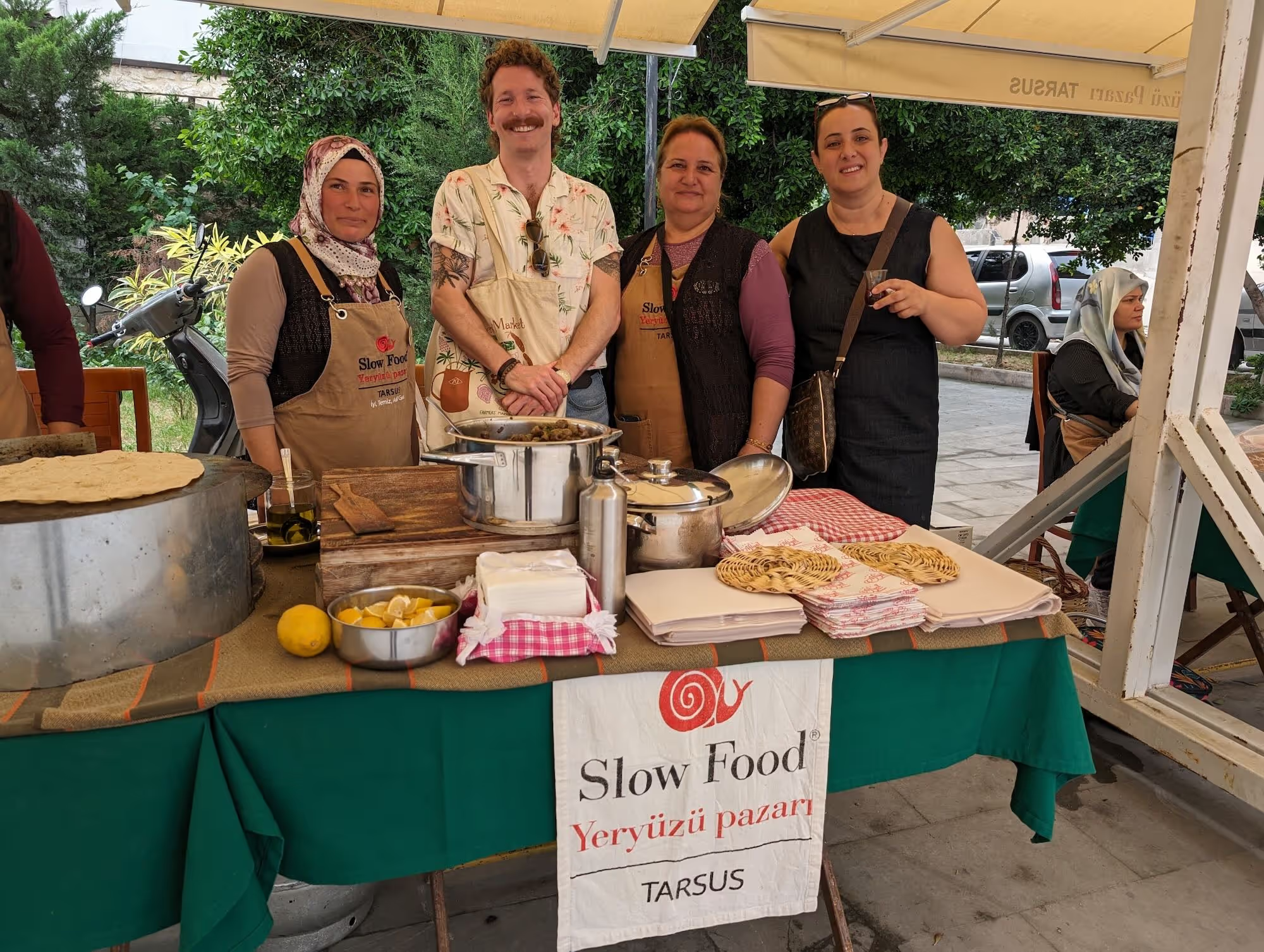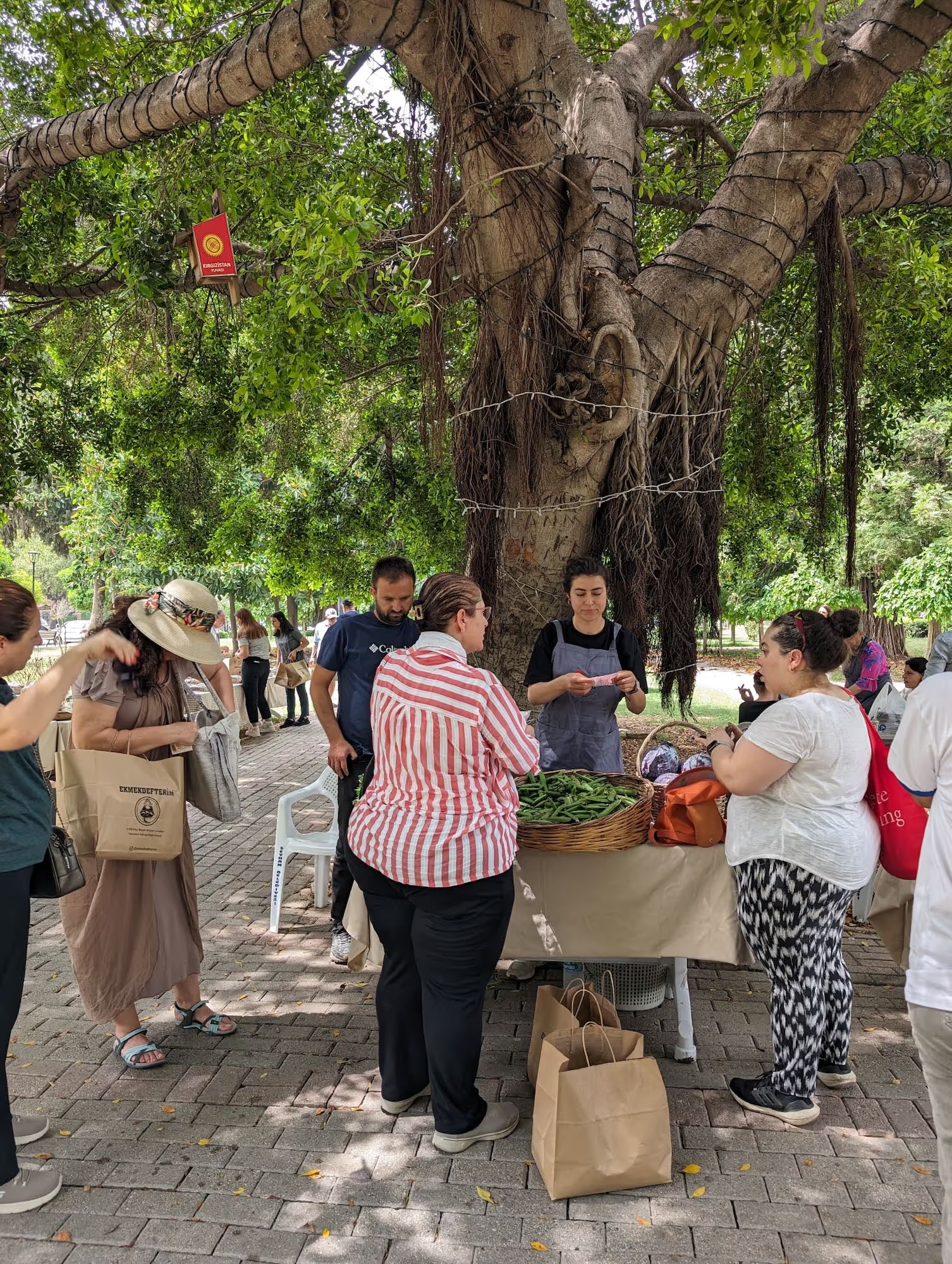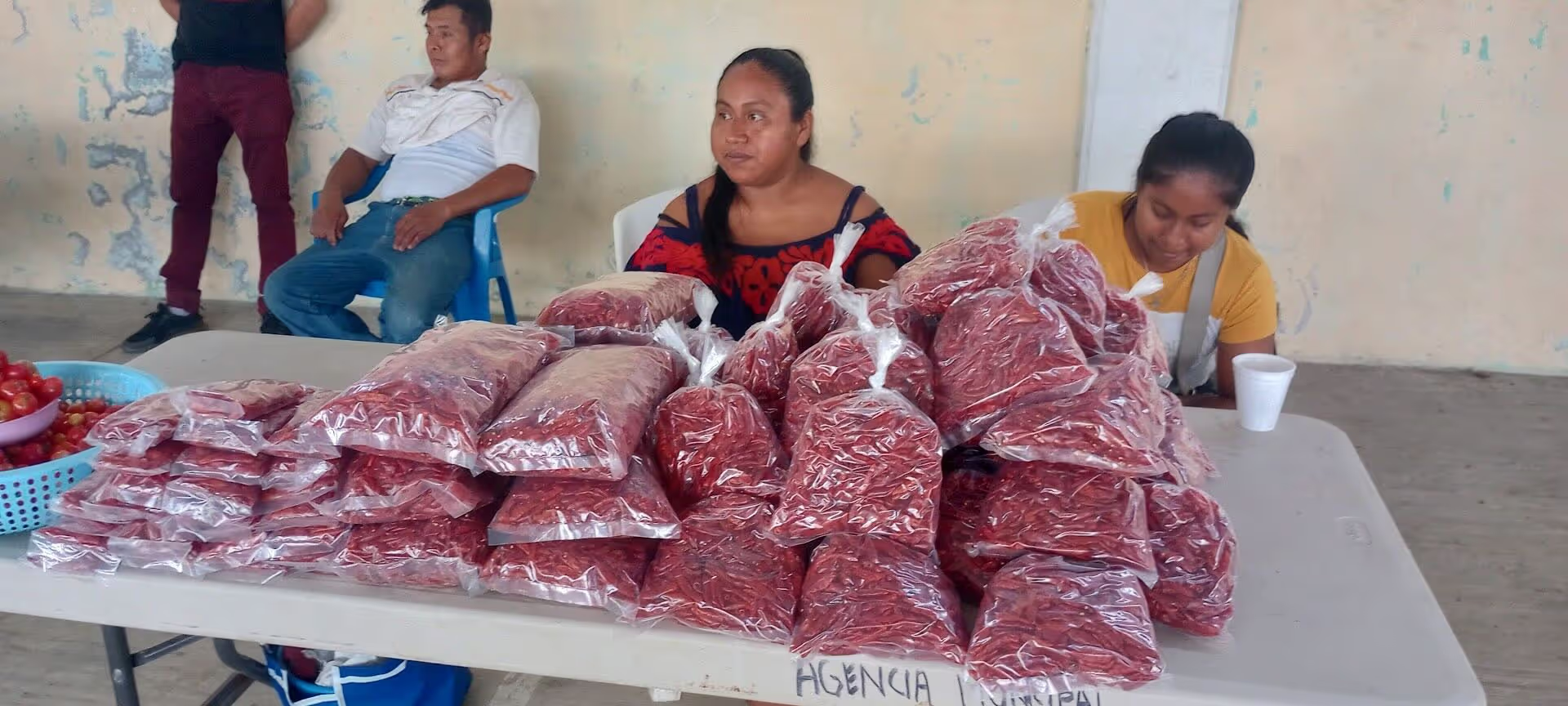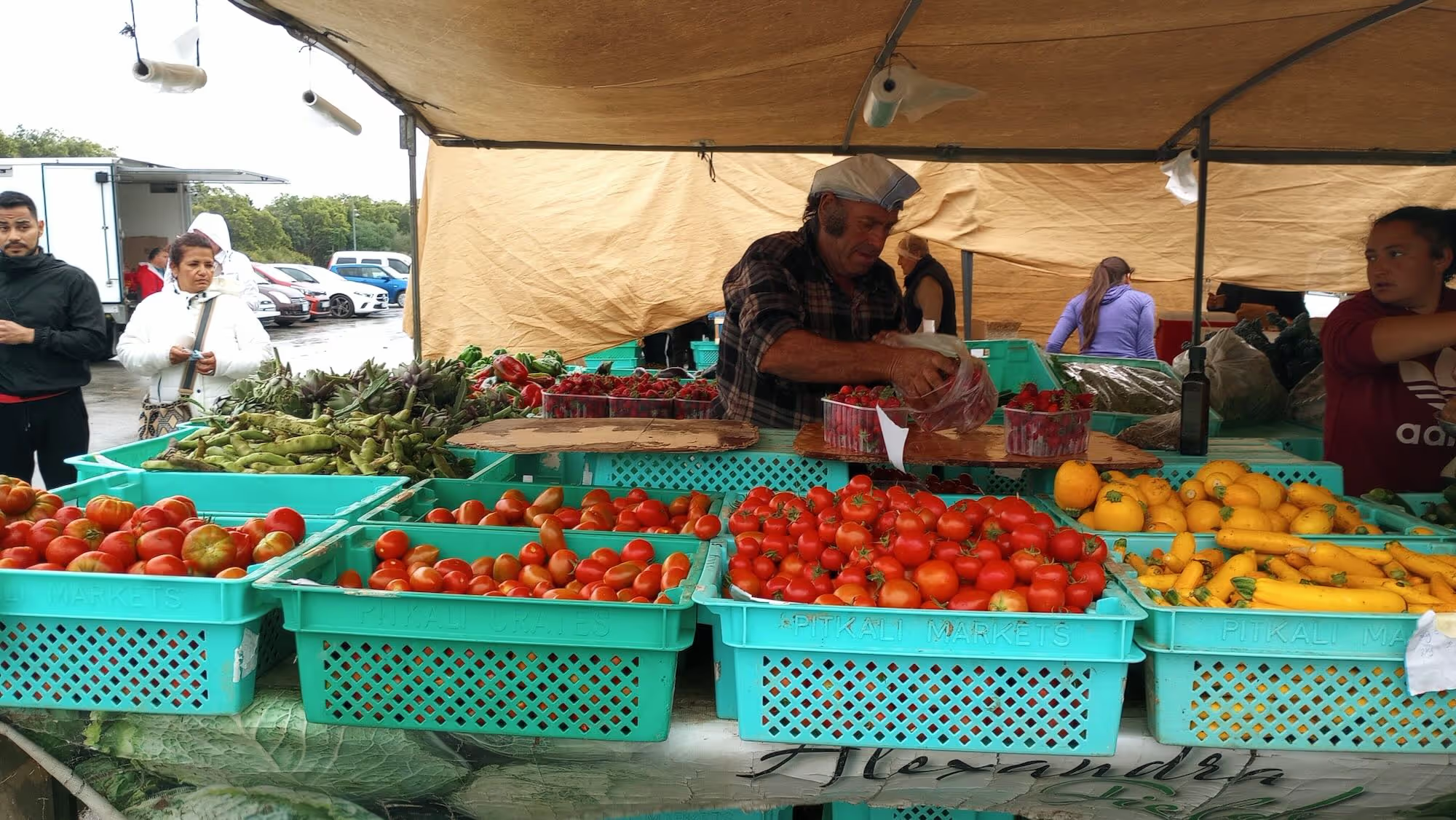A biweekly newsletter with public space news, resources, and opportunities.
A curated dispatch on all things public markets plus the latest announcements from the Market Cities Program.
Editor’s Note: Justin Cantafio has worked as an artisanal fishmonger, an organic farmhand, and currently serves as the leader of Farmers’ Markets of Nova Scotia, a cooperative of over 40 markets. In 2023 and 2024, Justin undertook a Nuffield Scholarship, taking him across Canada, Mexico, France, Spain, Portugal, Malta, Italy, and Turkey, to study how farmers’ markets* can strengthen food sovereignty, local economies, and build community resilience. Drawing on this global research, Justin shares his insights, offering recommendations for planners and policymakers to harness the full potential of these community spaces.
The longer I work in the local food world, the less I mince my words. From farmers to consumers, the globalized industrial food system is failing many of the people it’s meant to serve. In Canada, nearly one in four people struggle to access the food they need, with racialized households facing even higher rates. Small- and medium-scale farms are disappearing at an alarming pace. Corporate consolidation in the grocery sector has made fresh food more expensive and less accessible, while grocery giants post record profits and many farmers lose money year after year. Climate change, global conflicts, and supply chain breakdowns have shown just how fragile our centralized food infrastructure really is, even as we continue to import most of our fruits and vegetables. I saw these patterns echoed in every country I visited.

And yet, there is another path. Around the world, I’ve seen farmers’ markets doing more than just selling food. They show what it looks like to feed ourselves in ways that are sustainable, just, and rooted in place.
At their best, farmers’ markets flip the industrial food model on its head, giving communities more agency over how their food is grown, distributed, and enjoyed. They can strengthen food sovereignty by keeping more food dollars in local economies, building equity into food systems, and addressing food justice through intentional inclusion. And they can preserve traditional foodways and cultural traditions, protecting knowledge that the industrial food system often erases.

Farmers’ markets also promote agroecology and sustainable agriculture. By creating stable, place-based markets, they make it possible for farmers to grow food in ways that restore the soil, protect biodiversity, and respond to climate change. At their best, farmers’ markets are spaces where relationships matter as much as transactions, where diversity of food and culture is celebrated, and where resilience is built from the ground up.
These aren’t abstract ideals. I witnessed them firsthand as practical, proven approaches that are working right now in farmers’ markets across the globe.
Below are two case studies from my travels that show how farmers’ markets can be powerful tools for change.
Deep in the mountainous cloud forests of northern Oaxaca lies Cerro Quemado, a small Mazatec village I visited where agriculture is more than a livelihood. Here, farming is an act of resistance, and the village’s farmers’ market is the foundation of a region’s food sovereignty.

Traditional milpa agriculture thrives in Cerro Quemado. From rolling hills to dense jungle, families grow corn, beans, squash, chilis, bananas, cacao, coffee, medicinal herbs, and more, often interplanted through complex agroforestry systems. These are Indigenous foodways, refined over countless generations, that nourish both people and place. On my way there by car, I noticed the stark contrast in the surrounding valleys. Corporate monocropping and predatory rental agreements were locking local farmers into dependency on corporate entities.
When I asked one Cerro Quemado farmer why he continued to farm the traditional way, his answer was simple and profound:
“For us, our agriculture is an act of ongoing resistance to colonialism.”
While small and humble, the local farmers’ market is the heartbeat of Cerro Quemado. It’s where people trade, gather, teach, and celebrate. During my visit, local schoolchildren gave presentations on the history of traditional cacao production and agroforestry practices. Women sold unique products that hold no value in commodity markets but are priceless in their cultural and nutritional worth for the community. The market provides a place where producers earn fair prices while preserving biodiversity and passing on knowledge to the next generation.

Cerro Quemado’s farmers’ market is more than just a place to buy and sell goods. It protects cultural foodways and Indigenous knowledge, strengthens community control over food and land, and promotes sustainable farming practices. And it shows how a market, when locally-led, can be more than a place of commerce. Indeed, it can be a place of dignity, education, and resistance.
Cerro Quemado is a reminder to policymakers and planners that supporting these markets means investing not only in physical infrastructure, but also in the preservation of the cultural and ecological systems that make them possible.
From Rome to Sicily to Naples, as I traveled throughout Italy, I witnessed firsthand what happens when a national institution throws its weight behind local food. With the support of the Italian government, Coldiretti – Europe’s largest agricultural union – has established roughly 1,200 “Campagna Amica” farmers’ markets across the country. These are part of a coordinated national strategy to strengthen food sovereignty, protect rural livelihoods, and reconnect consumers with the sources of their food.
Campagna Amica translates to “Friendly Countryside,” and I saw its unmistakable brand as bright yellow tents and aprons animating spaces everywhere in Italy, from the narrow busy alleys of Naples to the small squares of sleepy rural villages. The emphasis is on food that is seasonal, transparent, and tied to place. Vendors are verified farmers, products are clearly labelled with their origin, and the entire system is reinforced by government policy and infrastructure investments, alongside strong consumer trust.

Campagna Amica markets do more than sell food. They preserve traditional Italian foodways, from regional cheeses and wines, to heirloom grain varieties. They give small- and medium-scale farmers reliable sales channels, keeping control of production and profit within farming communities and out of corporate hands. They embed farmers directly into public spaces, turning markets into cultural and civic anchors. And they work! Nearly a third of Italians report regularly shopping at Campagna Amica farmers’ markets.
For placemakers, there’s an important lesson to be found in Italy. When governments treat farmers’ markets as essential public infrastructure, backed by policy and long-term funding, they can build food sovereignty, protect cultural heritage, and build resilient local economies.
These are just two salient examples of how farmers’ markets can strengthen food sovereignty, protect cultural heritage, and serve as engines for community resilience. In my Nuffield Scholarship report, I explore many more case studies from around the world. These examples demonstrate that when markets are supported, resourced, and rooted in place, they can address some of the most pressing challenges facing our food systems and public spaces.
For placemakers and policymakers, I hope these recommendations serve as an invitation. In my opinion, farmers’ markets are not just retail spaces. They’re civic and cultural infrastructure and leverageable assets. They can be designed and supported to advance public goals around health, equity, climate adaptation, and economic resilience. My Nuffield Scholarship report expands on these recommendations with further case studies, policy models, and practical tools for implementation.

From my research, I’ve distilled six core recommendations to unlock the full potential of farmers’ markets:
1. Enact supportive policies and legislation at all levels of government: Farmers’ markets thrive when policies shift away from corporate dominance towards community-led solutions. Legislation and policies must protect and build local food infrastructure and integrate farmers’ markets into broader strategies for climate adaptation, economic development, resilience, and public health.
2. Invest in infrastructure and human capacity: Farmers’ markets need more than tents and tables to thrive. They require funding for staff, training, and planning, alongside investments in seasonal extension and year-round facilities, utilities, and storage.
3. Diversify sales channels for vendors: Farmers’ markets are a vital launchpad, but stability grows when they are linked to food hubs, regionally appropriate local food infrastructure, and public procurement.
4. Scale up proven programs: Where programs such as buy-local campaigns are proven to work, stable, long-term funding can expand their reach and deepen their impact on food security and local economies.
5. Support agroecology and sustainable agriculture: Market policies and investments should favour farming that restores soil, protects biodiversity, and reduces environmental impact, with a focus on small- and medium-scale producers.
6. Embed equity, inclusion, and cultural relevance into market design: Markets reach their full potential when they are intentionally inclusive, representative of the communities they serve, and supportive of underrepresented producers.
The state of our current food system is not inevitable. It’s a result of policy choices and power structures that prioritize corporate profit over people. But just as the dominant food system was built, new ones can be imagined and built in its place. And farmers’ markets, when supported, protected, and rooted in place, can lead the way. Farmers’ markets teach us that food is not just a commodity. It can and should be a manifestation of culture, community, ecology, and care. I encourage you to reimagine public spaces as places that make people feel at home, woven into the social, cultural, and culinary fabric of a community, and to see farmers’ markets as one of the most powerful ways to bring that vision to life.
If you’d like to learn more, I humbly invite you to read the full report here: Rooted in Place: The Role of Farmers’ Markets in Building Sustainable Food Systems in Canada.
—
Justin Cantafio is a relocalization and food sovereignty advocate, a nonprofit executive, consultant, speaker, and Nuffield Scholar. He presently serves as the Executive Director of Farmers' Markets of Nova Scotia, a non-profit cooperative of over 40 farmer's markets. He is the Co-founder and President of Canadian Farmers' Markets, Canada's national farmers' market association, and a founding member of the UN FAO-funded World Farmers Markets Coalition. Justin is a founder and Director of the Halifax Regional Food Hub Co-operative and a founder and Director with the Atlantic Food Action Coalition. He also serves as an Advisor for the Centre for Local Prosperity, a charitable organisation specialising in relocalization.
You can contact him at fmns@farmersmarketsnovascotia.ca.
—
*Note on style variation: This guest article references “farmers’ markets.” Project for Public Spaces’ communications use “farmers markets” to include a wide range of organizational structures.
The rich text element allows you to create and format headings, paragraphs, blockquotes, images, and video all in one place instead of having to add and format them individually. Just double-click and easily create content.
The rich text element allows you to create and format headings, paragraphs, blockquotes, images, and video all in one place instead of having to add and format them individually. Just double-click and easily create content.
Body Text Body Link
The rich text element allows you to create and format headings, paragraphs, blockquotes, images, and video all in one place instead of having to add and format them individually. Just double-click and easily create content.
Here is some highlighted text from the article.




Headings, paragraphs, blockquotes, figures, images, and figure captions can all be styled after a class is added to the rich text element using the "When inside of" nested selector system.
Headings, paragraphs, blockquotes, figures, images, and figure captions can all be styled after a class is added to the rich text element using the "When inside of" nested selector system.
Headings, paragraphs, blockquotes, figures, images, and figure captions can all be styled after a class is added to the rich text element using the "When inside of" nested selector system.

We are committed to access to quality content that advances the placemaking cause—and your support makes that possible. If this article informed, inspired, or helped you, please consider making a quick donation. Every contribution helps!
Project for Public Spaces is a 501(c)(3) tax-exempt organization and your donation is tax-deductible within the guidelines of U.S. law.